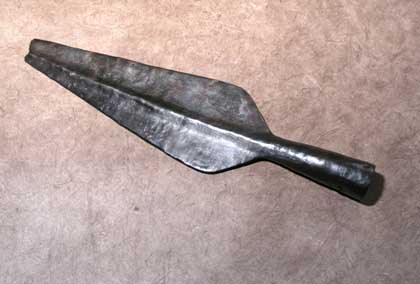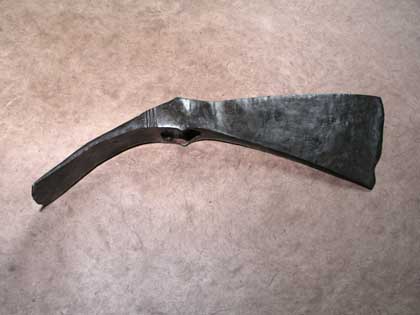








|
|
A new find could give more light on the Varus battle location
April 8th, 2004
Göttingen - At least two huge roman military camps,
but other two are probably identified, from the last decade of the 1st century BC
were revelaed by german archeologists. The first has been found on a hill close to the Werra river in Lower Saxony. Measuring 350x150m, the main construction is surrounded by ditches and
rampart, and contained tents and wooden houses for 50-120 men.
The site was discovered by metal detectorists that reported many finds of coins. These rumors alarmed the archeologists that decided to investigate the hill with the metal detector in order to map the findings and decide the best place were to
dig.
 |
 |
First investigations revealed in only 20 cm depth the first of four "dolabrae" erroneously described as
"battle axes".
The area was kept secret because of the danger of illegal diggers until now. Specialists from Germany called it a "scientific sensation". Klaus Grote, that leads the excavation team, has shown well conserved iron, bronze, ceramic and silver finds.
Beside the big fort are located other smaller camps, still to be excavated.
The second camp, even closer to the Werra, the wall today measures 40cm only.
Here a dolabra was found. As the Camp I also this was defended by catapults as
suggested by the bolts found. Camp III, on the west of Camp I, revealed many
objects, while Camp IV is currently only supposed.
The main camp was probably created for logistic support of the roman legions heading north. In fact evidences of wooden buildings were found, but also tents arrangements are proven because of a number of tent pegs.
This suggests the place as a support for legions on march.
The excavated catapult bolt heads, lances, sicles, dolabras and coins were mainly found under the land surface or directly under leaves on the soil. Currently 250 located objects were unearthed.
The experts say that this site is probably connected to the campaigns of Nero Claudius Drusus, but it could reveal many connections also with the famous Varus battle that, until this discovery, was supposed to be located near Kalkriese.

|